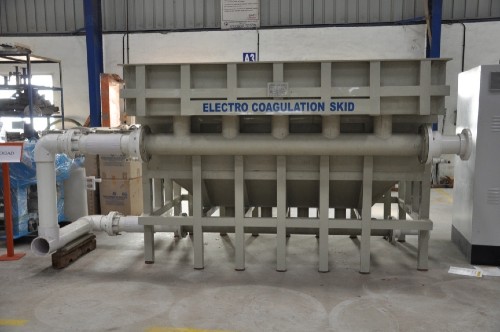OUR PRODUCTS
Electro Coagulation
Electrocoagulation (EC) is an electrochemical water treatment process used by a variety of industries. The process destabilizes and aggregates contaminant particles, ions such as heavy metals, and colloids, using an electrical charge to hold them in solution. The process traditionally utilizes an anode and a cathode, stimulated by a DC power source to destabilize the charges. This operation separates flocculated materials from water, allowing those materials to be removed, leaving clear water.
Traditionally, the electrochemical process electrolytically oxidizes a sacrificial anode to release metal ions that form coagulants, destabilizing contaminants, and breaking emulsions. This coagulation forms flocculants that float to the surface for removal.
An electrochemical process offers outstanding benefits when compared to other technologies:
- Can treat both process and waste water
- Treats a wide range of contaminants
- Operation uses safe, simple equipment
- Typically, no need for chemical treatment
- Can typically reuse electrocoagulation-treated waters, minimizing waste
The electrochemical process is complex, but well understood. It involves three distinct stages that incorporate chemical and physical phenomena.
For every drop of water you waste, you must know that somewhere on earth someone is desperately looking for a drop of water!
